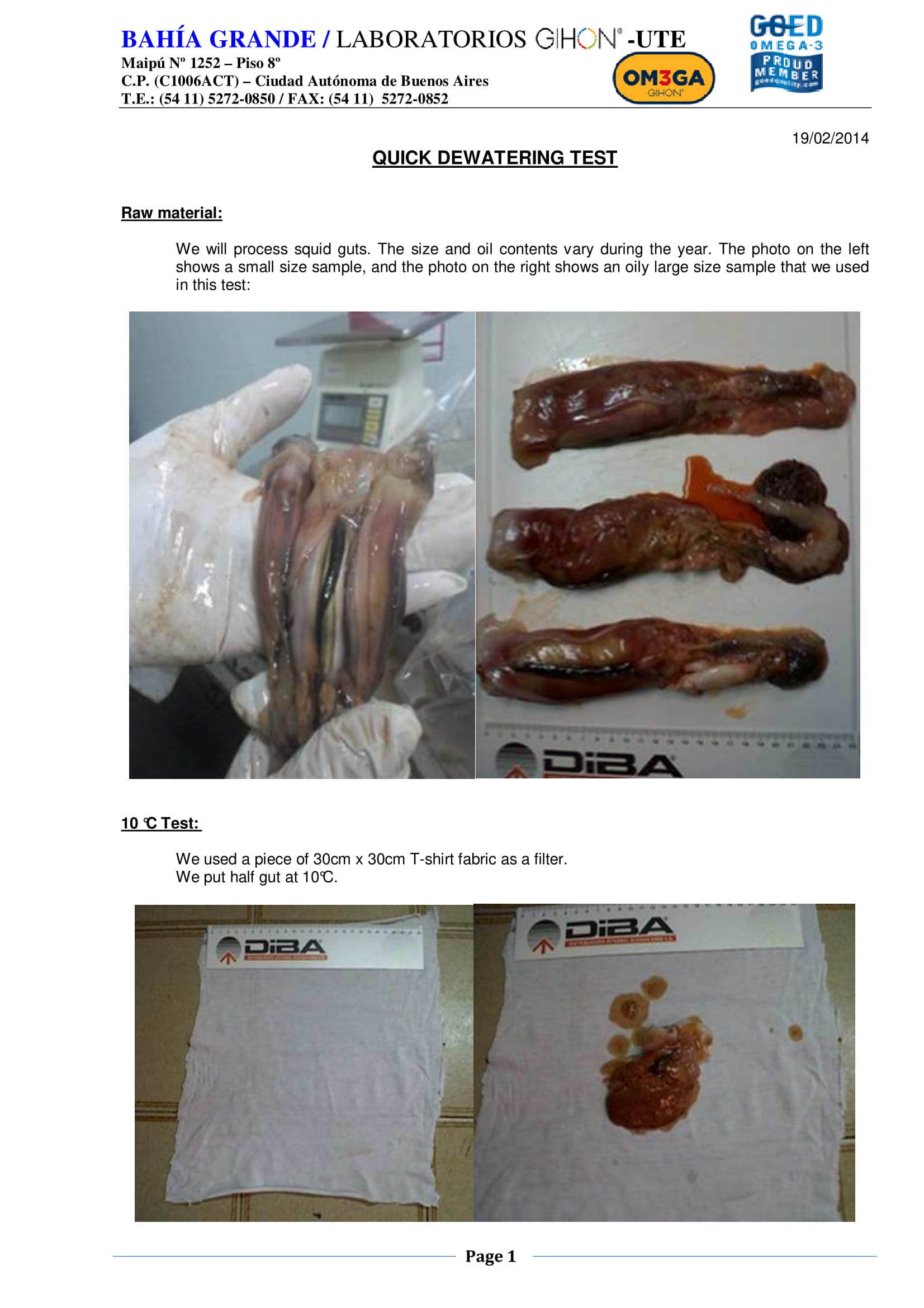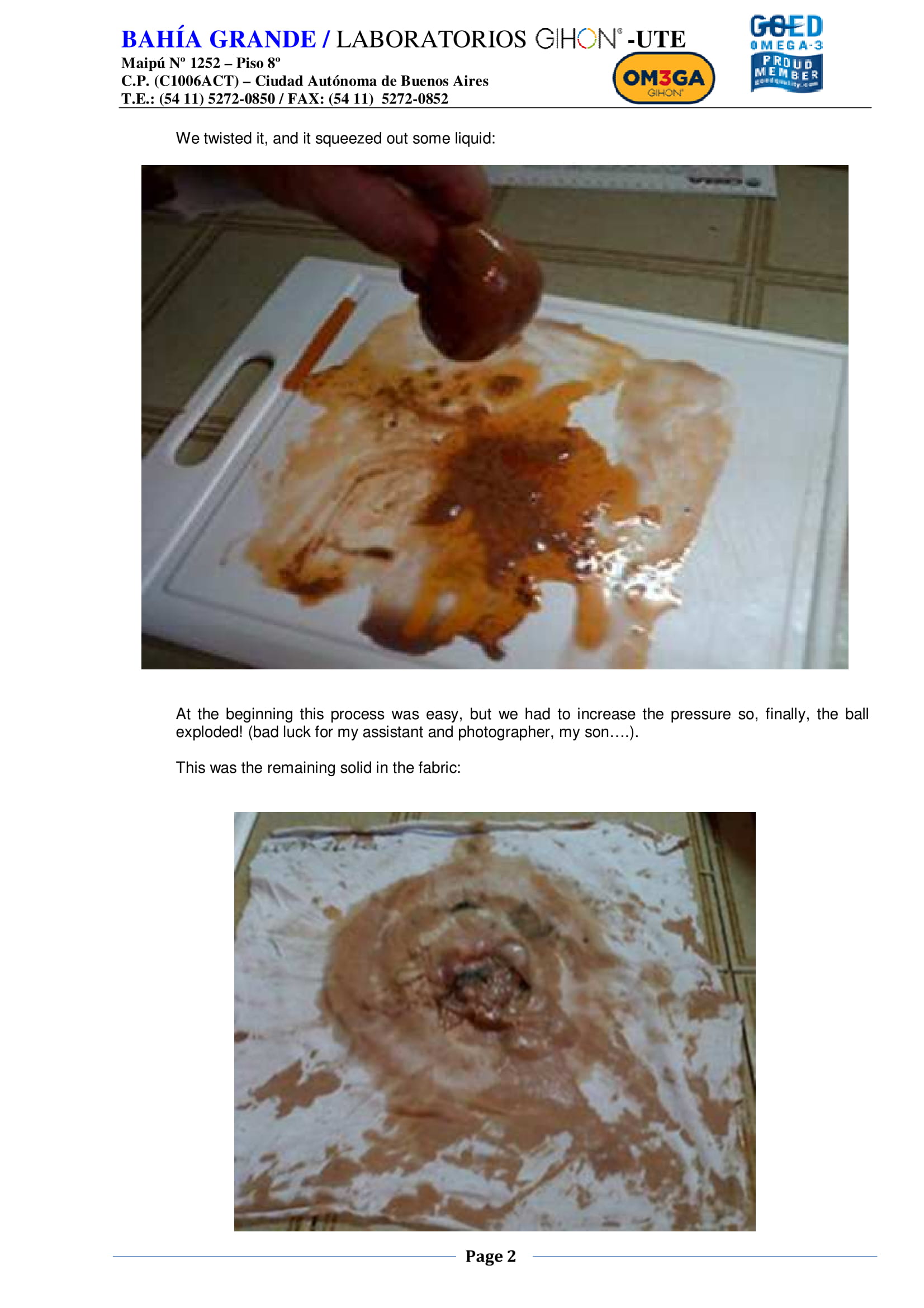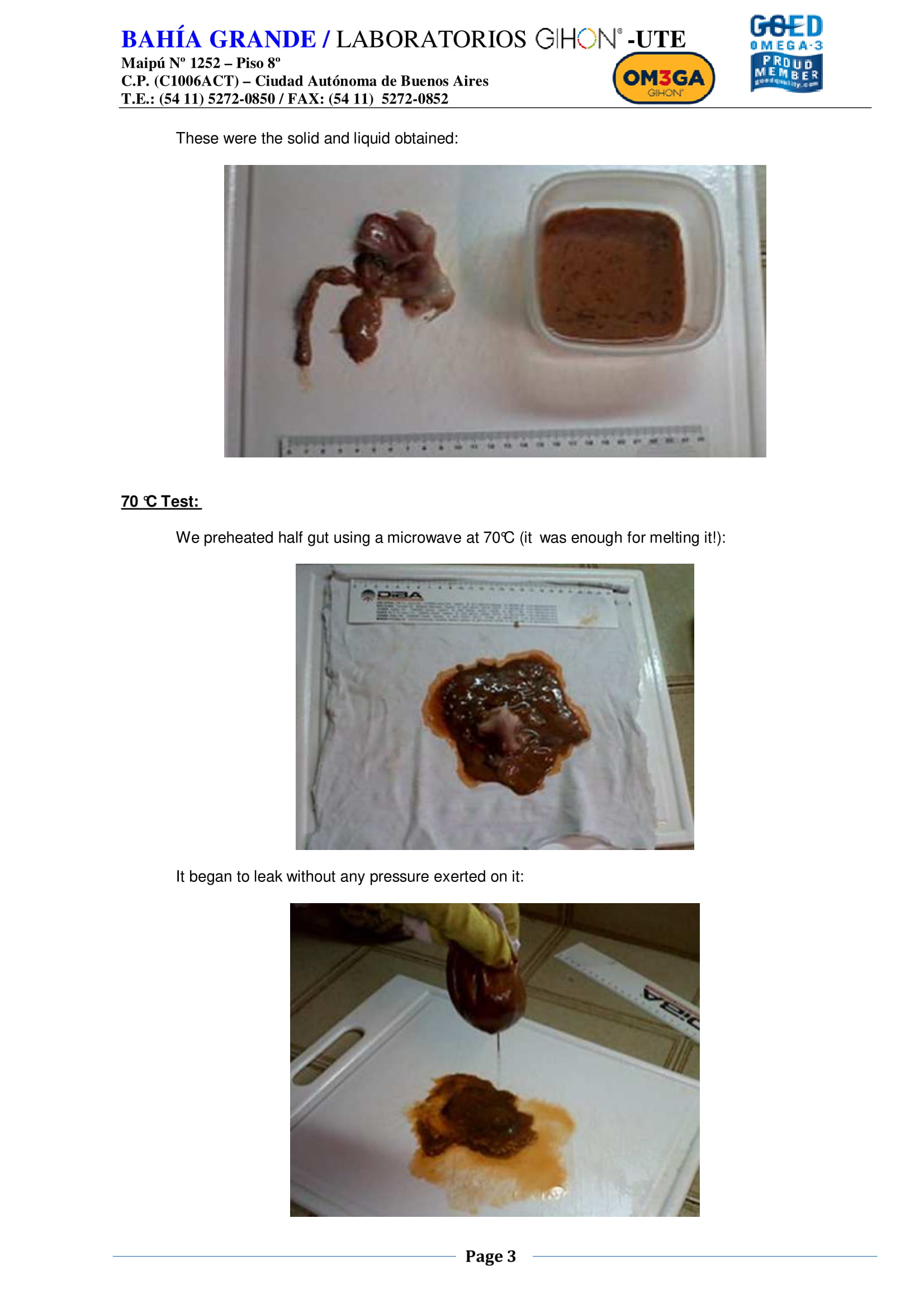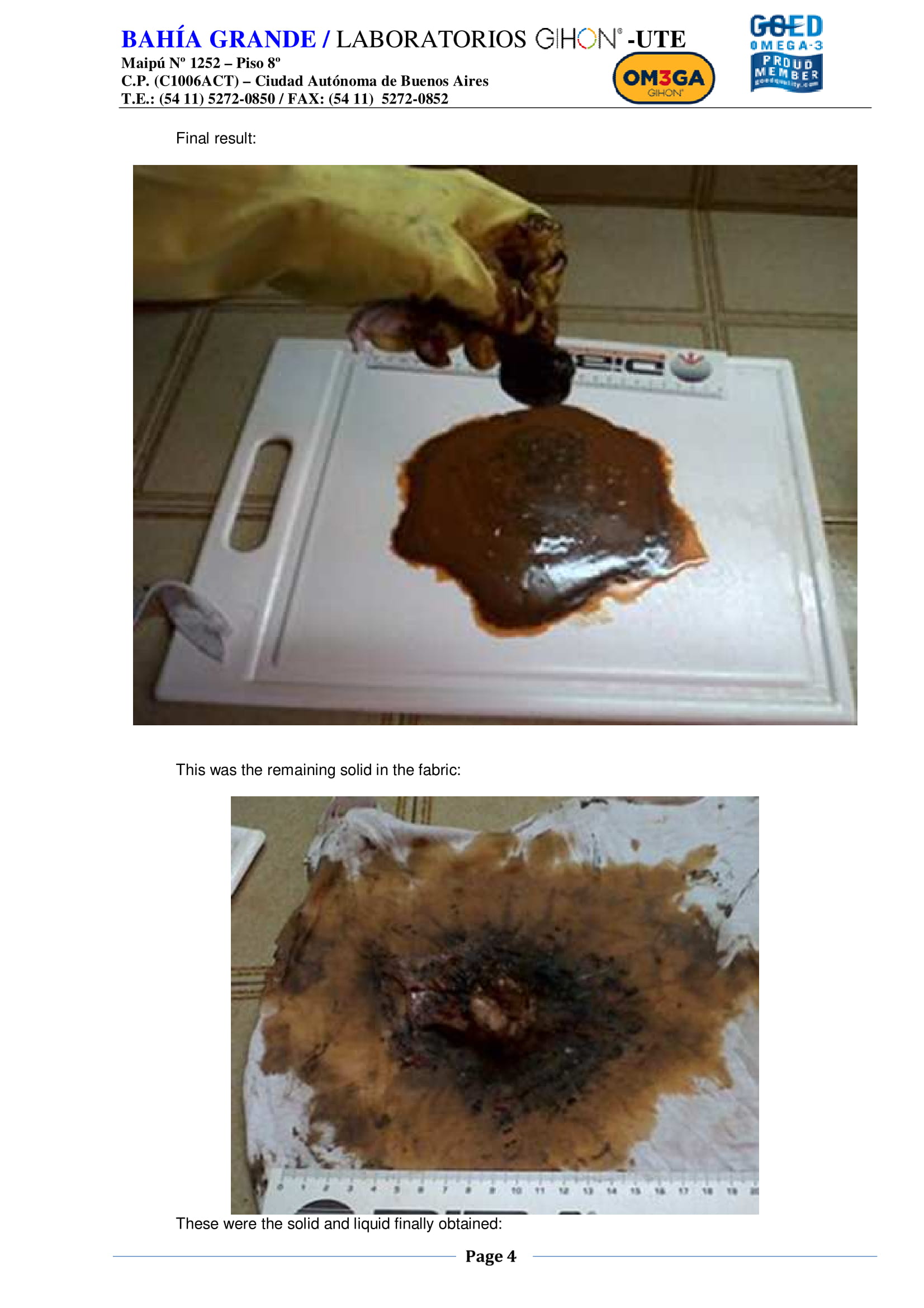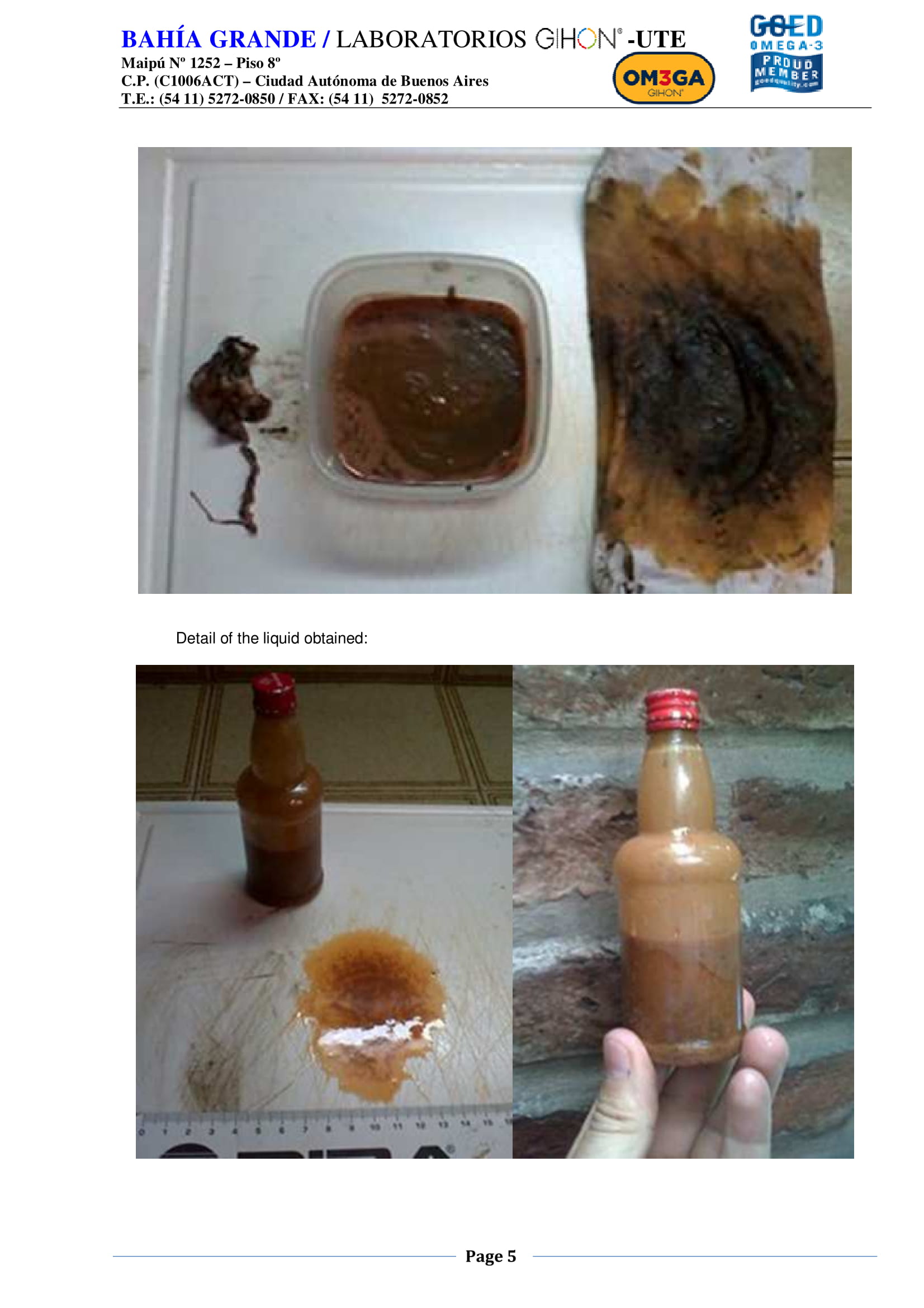The quickest test to see if something can be dewatered in a screw press is to grab a fistful and see if you can squeeze out any water. With some materials, like a slurry of paper fiber, wet feathers, or macerated tomatoes, it is obvious that liquid can be squeezed out. With others, like mashed potatoes or gobs of pork fat, it is equally obvious that no water can be removed. See https://youtu.be/drGKw0bapz4 for an example of a bad application.
With some materials it is hard to tell with the fist test. Wastewater sludges (especially those that have been flocculated) and peel (potato, carrot, beet) from brush peelers may dewater slightly, or not at all. The fist test is inconclusive.
A better test, and almost as easy to perform, involves twisting a sample of material in piece of cotton cloth. Place a lump of material, or pour a tiny cupful of liquid, in a cloth and twist it into a ball. (Desperate field engineers have used hair nets, hotel napkins, and even their T-shirt for this purpose.) If clear water comes through the cloth, chances are a screw press will work. If puree comes through the cloth, there are apt to be problems.
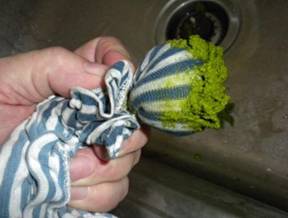

ALGAE: NO SEPARATION FIBER FILTER: BEFORE & AFTER
From time to time only a small sample is available, and we need to find out to approximately what moisture content it can be reduced in a screw press. Twisting the sample in a cloth, and then running the fiber remaining from the cloth in a moisture balance, can give an approximate measure of what can be achieved.
These same tests can be used with both fibrous and chemical press aids. Mixing a press aid such as wood fiber or rice hulls with the sample material, and then trying the fist or cotton cloth test, will indicate if a press aid is called for.
Frequently it is convenient to run a test using plastic freezer Baggies. A sample of material is placed in one bag, while another bag has the material plus a small amount of press aid such as hydrated lime, alum, or gypsum. Both bags are massaged for a few minutes. Then the material is squeezed in the Baggie to see if a stream of water can be separated. Frequently the results are dramatic, while other times it is obvious that no useful reaction has occurred.
Below is a recent example of a customer utilizing this technique:
